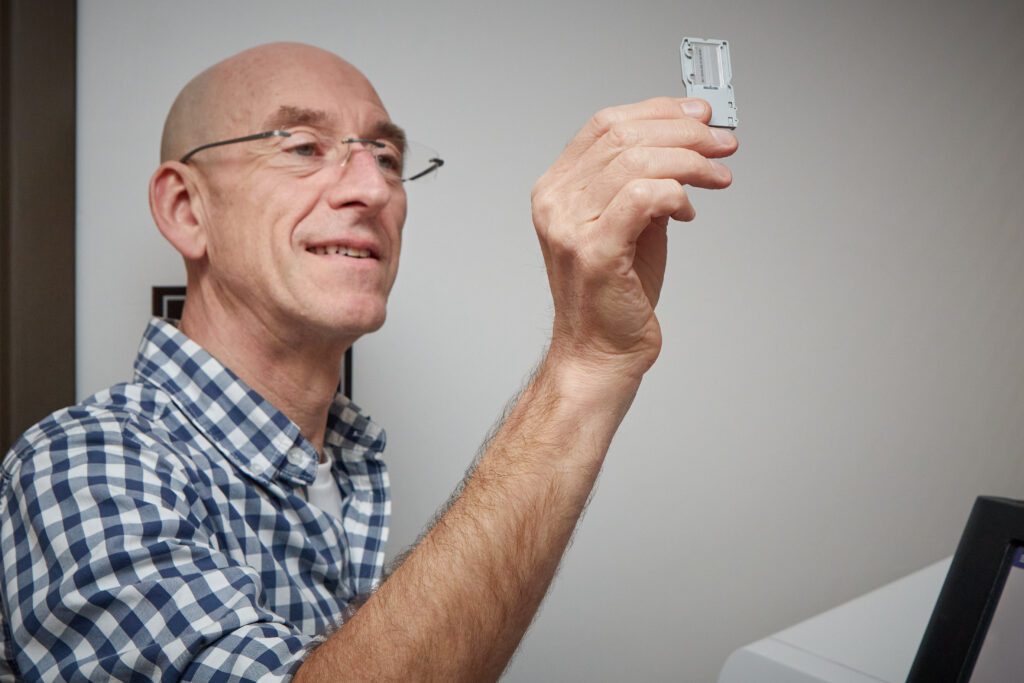Tooth decay is one of the leading chronic preventable diseases among both children and adults worldwide. A Clemson University researcher is working to develop a probiotic that could help bolster “good” bacteria in the mouth and subsequently prevent cavities.
Vincent Richards, a professor in the Department of Biological Sciences, has been researching certain bacteria found in the mouth since he was a postdoctoral fellow and the entire dental microbiome since 2016.
Every human mouth is filled with bacteria. Some of it is “good,” meaning it plays an important role in dental health. Others are “bad” and can lead to tooth decay and other oral health problems.

Good and bad
The environment in the mouth is a dynamic equilibrium. Certain (“bad”) bacteria can rapidly catabolize dietary carbohydrates and lower the pH. This promotes proliferation of the “bad” bacteria because they thrive in an acidic environment. It can also demineralize the tooth surface and lead to a cavity. However, other (“good”) bacteria can breakdown dietary arginine and urea to raise the pH. Saliva has a strong buffering capacity and helps the growth of this good bacteria.
One of Richards’ colleagues, Modupe Coker, a trained dentist and a researcher with the Institute of Human Virology Nigeria was studying HIV and needed an expert in applying next generation sequencing to the study of dental microbiomes for a research project.
Having an ample level of saliva can support “good” bacteria in the mouth. However, people with HIV tend to produce less saliva as a side effect of the infection. The study included a cohort of around 600 children — some of whom were infected with HIV, some exposed to HIV but uninfected and others were unexposed and uninfected.
The ultimate goal of their research is to develop a usable probiotic to populate the mouth with the “good” bacteria so that they can work to raise or maintain a high pH.
Doesn’t exist
Currently, nothing of the sort exists. Probiotics found on grocery store shelves do not target the unique and specific microbiomes of the human body the way Richards aims.
Each microbiome is home to different forms of bacteria and no two are exactly alike. The challenge is finding multiple bacteria strains to target so that the probiotic is able to work for everyone.
To try to identify specific types of bacteria, Richards employs a technology that targets the RNA polymerase beta prime subunit gene (rpoC). The gene is found in all bacteria, and because of that, can be used as a sort of homing beacon that can detect sequence variants within the bacteria.

Identifying species
Richards and colleagues used amplicon sequencing to screen samples and obtain taxonomic profiles. The profiles tell them which species are present and their relative frequency. The rpoC locus is able to resolve species that the locus used in previous studies could not.
The new locus can also sequence variants within a species. Richards said this is important because of the wide spectrum of biochemical characteristics among strains within species.

For example, some strains show much higher activity within plaque for the pathways responsible for modulating the pH. However, to distinguish different strains, researchers must sequence the entire bacterial genome, which is much more expensive.
The amplicon sequencing guides the selection of a sub-set of samples for full sequencing.
Using RNA sequencing that can measure activity of pH modulating pathways, the researchers have already identified certain species that show probiotic potential. However, they need to identify those sequence variants — and ultimately strains — that are widely distributed among individuals.
“By combining amplicon sequencing with genome sequencing, we hope to build a panel of strains that collectively are widely distributed as no single strain is in everybody’s mouth. This approach will boost the effectiveness of the probiotic panel as it will ensure that at least some of the strains will be able to colonize the tooth surface,” Richards said.
Wide implications
The implications of the research extend far beyond the children included in the study. In the U.S., cavities run rampant in children. According to Centers for Disease Control and Prevention data, 52% of children in children ages 6 to 8 have had a cavity in their primary (baby) teeth. Among adolescents aged 12 to 19, nearly six of 10 have had a cavity in their permanent teeth.
Richards also hopes to implement his genetic research in the treatment of more than just cavities.
“The ultimate goal is to improve the quality of life for others,” he said. “I remember being stunned at how well the technologies actually worked, and I’m really excited about applying them moving forward.”
Get in touch and we will connect you with the author or another expert.
Or email us at news@clemson.edu
